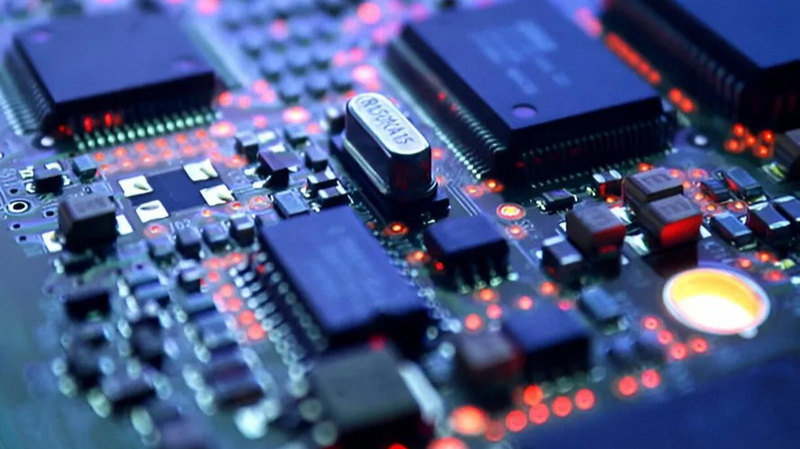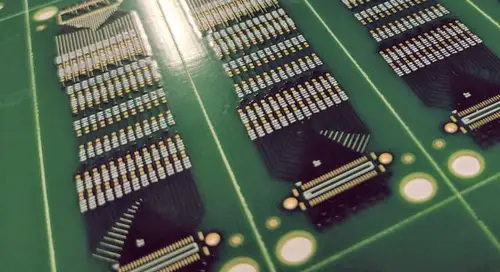Content Menu
● Introduction to SMD and SMT
>> What are SMDs and SMT?
>> Benefits of SMT
● Choosing the Best SMD Machine
>> 1. Placement Speed and Accuracy
>> 2. Machine Setup and Optimization
>> 3. Inline Inspection Systems
>> 4. Automation of Material Handling
>> 5. Operator Training
● Best SMD Machines for Efficiency
>> Features of Top SMD Machines
● Optimizing PCB Design for SMT
>> 1. Simplify Design Structures
>> 2. Select Appropriate Materials
>> 3. Optimize Traces and Spaces
>> 4. Panelization
>> 5. Advanced Techniques for Complex Circuits
● Implementing Lean Manufacturing Principles
● Improving Production Efficiency
>> 1. Optimize Process Flow
>> 2. Prepare Components and Feeders in Advance
>> 3. Balance Load Distribution
>> 4. Equipment Optimization
>> 5. Minimize Component Changes
● Emerging Technologies in SMT
● Advanced Techniques in PCB Assembly
>> Microvias Technology
>> Fine-Pitch Component Placement
>> Controlled Impedance Routing
● Conclusion
● FAQs
>> 1. What are the key benefits of using SMT in PCB production?
>> 2. How can I optimize my PCB design for SMT assembly?
>> 3. What features should I look for in a high-efficiency SMD machine?
>> 4. How does automation impact SMT production efficiency?
>> 5. What are the top brands for SMD machines, and what are their strengths?
● Citations:
In the rapidly evolving electronics manufacturing industry, improving production efficiency is crucial for staying competitive. One key factor in achieving this is the use of Surface Mount Devices (SMDs) and the right Surface Mount Technology (SMT) machines. This article will explore how to enhance PCB production efficiency by selecting and utilizing the best SMD machine for your manufacturing needs.

Introduction to SMD and SMT
What are SMDs and SMT?
Surface Mount Devices (SMDs) are electronic components designed to be mounted directly onto the surface of a printed circuit board (PCB), eliminating the need for through-hole mounting. Surface Mount Technology (SMT) is the process of assembling these components onto PCBs using automated machinery. SMT has revolutionized the electronics industry by offering faster, more precise, and cost-effective assembly compared to traditional through-hole technology.
Benefits of SMT
- High-Speed Production: SMT machines can place thousands of components per hour, significantly increasing production speed.
- Precision and Accuracy: Automated placement ensures components are accurately positioned, reducing errors and rework.
- Cost-Effectiveness: SMT reduces labor costs and material waste, making it a preferred method for high-volume production.
Choosing the Best SMD Machine
Selecting the right SMD machine is critical for optimizing PCB production efficiency. Here are some factors to consider:
1. Placement Speed and Accuracy
High-speed placement machines can mount components at rates exceeding 100,000 components per hour (CPH), with accuracy levels as precise as ±0.0001 mm. Investing in machines with advanced placement technologies, such as laser alignment and multi-head systems, can significantly boost production output.
2. Machine Setup and Optimization
Optimizing the SMT process involves selecting the right component feeders, optimizing placement parameters, and using appropriate solder paste and pick-and-place heads. This ensures that the machine operates at its maximum potential, reducing downtime and improving quality.
3. Inline Inspection Systems
Implementing inline inspection systems, such as Automated Optical Inspection (AOI), helps detect defects early in the production process. This reduces rework, improves quality control, and enhances overall efficiency by minimizing manual inspection tasks.
4. Automation of Material Handling
Automating the material handling process, including feeder changeovers and material transport, reduces manual intervention. This increases material uptime, decreases changeover times, and boosts overall production efficiency.
5. Operator Training
Well-trained operators are essential for maximizing machine performance. Training should cover machine operation, fault identification, and minor repairs to minimize downtime and ensure optimal production conditions.
Best SMD Machines for Efficiency
Some of the top manufacturers of SMT machines include Europlacer, Yamaha, Mycronic, Juki, Panasonic, Universal Instruments, Assembleon, FUJI Corporation, and Hanwha Precision Machinery. These brands offer a range of machines tailored to different production needs, from high-speed placement to precision alignment.
Features of Top SMD Machines
- High-Speed Placement: Machines like those from Yamaha and Juki offer high-speed placement capabilities, ideal for large-scale production.
- Precision Alignment: Brands such as Mycronic and Panasonic provide machines with advanced alignment systems, ensuring accurate component placement.
- Modular Design: Many modern SMT machines feature modular designs, allowing for easy integration with existing production lines and flexibility in production setup.
Optimizing PCB Design for SMT
Optimizing PCB design is crucial for efficient SMT assembly. Here are some strategies:
1. Simplify Design Structures
Simplifying PCB designs reduces manufacturing complexity. Avoid intricate patterns and minimize the number of layers to streamline fabrication and improve yield.
2. Select Appropriate Materials
Ensure that materials used are compatible with fabrication processes and meet durability and performance specifications.
3. Optimize Traces and Spaces
Optimize trace widths and spacing to prevent breaks during manufacturing and ensure reliable fabrication.
4. Panelization
Panelizing PCBs allows multiple boards to be produced in a single manufacturing cycle, increasing yield and reducing costs. Efficient panelization requires careful design to maximize space usage and minimize defects.
5. Advanced Techniques for Complex Circuits
For complex circuits, advanced techniques such as microvias technology and fine-pitch component placement can be employed. Microvias enable the creation of dense multilayer circuits, while fine-pitch placement requires high-precision equipment to prevent misalignment or solder bridging[2].

Implementing Lean Manufacturing Principles
Lean manufacturing principles focus on eliminating waste and maximizing value-added activities. In SMT production, this involves streamlining processes, reducing inventory, and improving workflow efficiency. By implementing lean principles, manufacturers can further enhance production speed and quality while reducing costs.
Improving Production Efficiency
Improving production efficiency with SMT machines involves several strategies:
1. Optimize Process Flow
Review and optimize the process flow to ensure each step is necessary and efficient. Use standardized instructions to reduce operator errors and wasted time[1].
2. Prepare Components and Feeders in Advance
Preparing components and feeders in advance reduces setup time and increases production speed. This includes using tape packaging for components to facilitate quick feeding into the SMT machine[7].
3. Balance Load Distribution
Reasonably allocate the number of mounting components for each SMT machine to ensure equal mounting times. This helps maintain a smooth production flow and prevents bottlenecks[4].
4. Equipment Optimization
Optimize the numerical control programs of each SMT machine to achieve high-speed placement and reduce mounting time. This involves minimizing nozzle changes and optimizing component pickup paths[4][7].
5. Minimize Component Changes
Reducing the variety of components used in production simplifies the assembly process and minimizes machine recalibrations. Standardizing component packages and brands can also enhance efficiency[4].
Emerging Technologies in SMT
Emerging technologies, such as advanced vision systems and automated material handling, continue to improve SMT efficiency. These innovations enable faster production cycles, better quality control, and reduced labor costs, making them essential for staying competitive in the electronics manufacturing sector.
Advanced Techniques in PCB Assembly
Microvias Technology
Microvias are small holes drilled into the PCB substrate, enabling the interconnection of traces across various layers of the board. This advanced technique allows for the creation of complex multilayer circuits with exceptional routing density. Microvias technology requires specialized equipment and expertise to ensure proper drilling, plating, and insulation of the vias[2].
Fine-Pitch Component Placement
Fine-pitch components have spacings smaller than 0.8mm between leads or pads. Advanced PCB assembly techniques encompass the placement of these components, demanding high-precision placement equipment and techniques. Proper alignment and soldering methods are critical to prevent misalignment or solder bridging[2].
Controlled Impedance Routing
Controlled impedance routing is essential for maintaining signal integrity in high-speed applications. This involves carefully designing PCB traces to ensure consistent impedance, which is crucial for preventing signal distortion and ensuring reliable communication[2].
Conclusion
Improving PCB production efficiency with the right SMD machine involves a combination of selecting high-performance equipment, optimizing the SMT process, and implementing efficient design and manufacturing strategies. By investing in advanced SMT machines and adopting lean manufacturing principles, manufacturers can significantly enhance production speed, quality, and cost-effectiveness.

FAQs
1. What are the key benefits of using SMT in PCB production?
SMT offers high-speed production, precision, and cost-effectiveness compared to traditional through-hole technology. It enables faster assembly, reduces labor costs, and improves product reliability.
2. How can I optimize my PCB design for SMT assembly?
Optimizing PCB design for SMT involves simplifying design structures, selecting appropriate materials, optimizing traces and spaces, and considering panelization to maximize production efficiency. Additionally, using common package sizes and footprints that align with standard assembly equipment capabilities is crucial[3].
3. What features should I look for in a high-efficiency SMD machine?
Look for machines with high placement speeds, precision alignment systems, modular designs for flexibility, and advanced inspection systems to ensure quality and efficiency.
4. How does automation impact SMT production efficiency?
Automation in SMT, such as automated material handling and inline inspection, reduces manual intervention, increases material uptime, and enhances quality control, leading to higher production efficiency and reduced costs.
5. What are the top brands for SMD machines, and what are their strengths?
Top brands include SMT LTD, Yamaha, Mycronic, Juki, and Panasonic. Each offers unique strengths such as high-speed placement, precision alignment, and modular designs tailored to different production needs.
Citations:
[1] https://www.smtneoden.com/news/how-to-effectively-improve-the-production-efficiency-of-pcb-smt-machine/
[2] https://www.rigiflex.com/blog/get-to-know-about-the-advanced-pcb-assembly-techniques-for-complex-circuits/
[3] https://vohrum.com/from-concept-to-completion-best-practices-in-smt-design-assembly-and-testing-for-high-performance-pcbs/
[4] https://www.neodensmt.com/news/improve-smt-production-efficiency-48868013.html
[5] https://sfxpcb.com/exploring-advanced-techniques-next-level-pcb-smt-assembly-solutions/
[6] https://www.electronicdesign.com/markets/automation/article/21176834/technotronix-6-best-practices-for-a-smoother-pcb-assembly-process
[7] https://en.borey-advanced.com/news_detail/80.html
[8] https://www.zetwerk.com/resources/knowledge-base/electronics-manufacturing-services-ems/smt-assembly-revolutionizing-pcb-production-process/
[9] https://www.ocmmanufacturing.com/resources/resource/dfm-tip-best-practices-for-surface-mount-technology-smt-design/
[10] https://www.linkedin.com/pulse/how-speed-up-pcb-production-time-using-smt-pcbs-guide-antti-rayming-stm5c
[11] https://www.andwinpcb.com/advanced-smd-board-assembly-methods-for-enhanced-manufacturing-yield/
[12] https://resources.pcb.cadence.com/blog/2020-how-to-optimize-pcb-design-for-smt-assembly-process-flow
[13] https://blogs.sw.siemens.com/valor-dfm-solutions/how-to-optimize-pcb-design-for-the-smt-assembly-process-flow/
[14] https://bayareacircuits.com/exploring-advanced-pcb-design-techniques-for-enhanced-performance/
[15] https://asselems.com/en/best-practices-in-smt-assembly
[16] https://www.zjyingxing.com/info/how-to-improve-the-manufacturing-effici-102670373.html
[17] https://pcbtrace.com/advanced-pcb-assembly-techniques-for-complex-circuits/
[18] https://www.reddit.com/r/PrintedCircuitBoard/comments/nid14w/first_pcb_build_with_smd_components_any/
[19] https://www.zjyingxing.com/info/what-to-improve-the-production-efficiency-of-s-102748737.html
[20] https://www.reddit.com/r/PrintedCircuitBoard/comments/sak3br/pcb_manufacturing_process_and_machines/




















